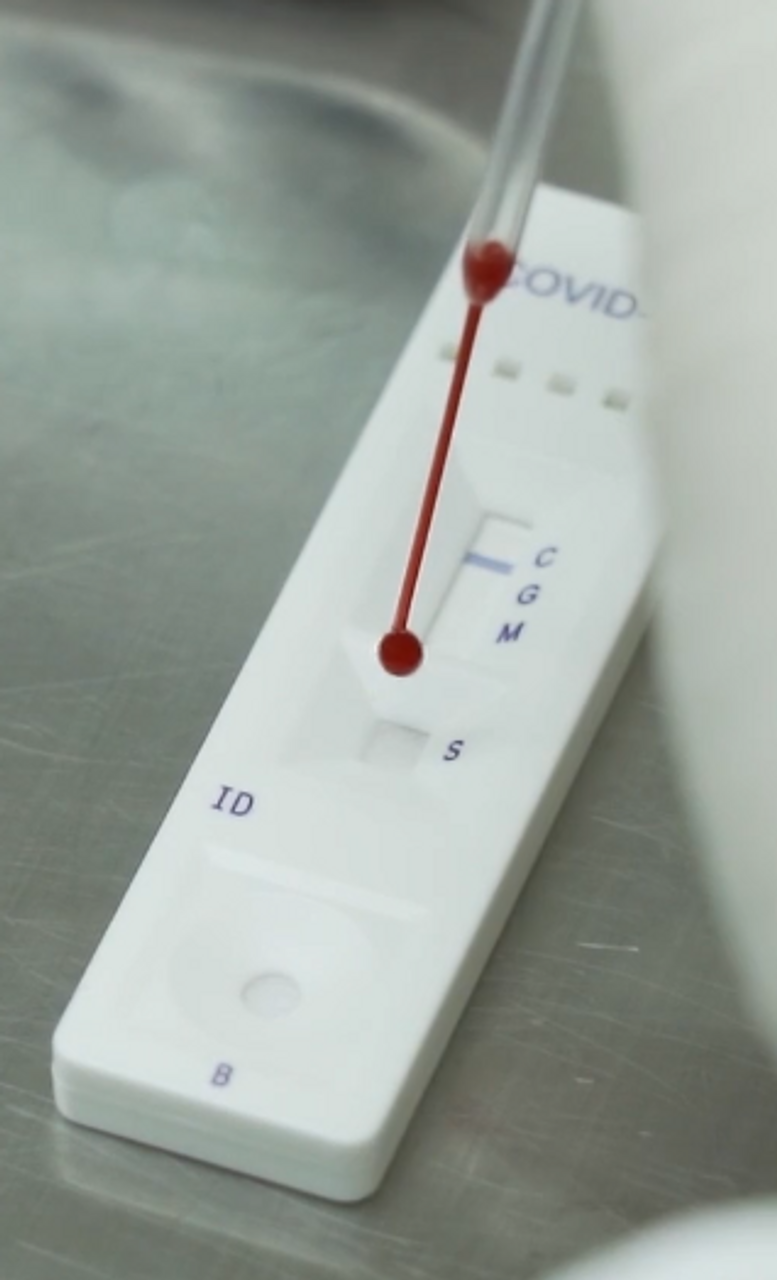Expanding testing for Coronavirus is critical for helping diagnose people who are asymptomatic but infected, those who do not have the virus and identifying, those who have recovered.
Antibody blood tests, also called serology tests, look for the presence of two tell-tale antibodies that the immune system produces as it fights off the invading SARS-CoV-2 viral RNA: IgM and IgG
As the body fights off infection, IgM is the first to jump into the battle. IgG arrives later and continues beyond the illness and may provide long term protection from becoming sick again.
This graphic offers a rough idea what the timeline looks like for someone infected with COVID-19.
How to Perform a Finger-Stick Blood Test
Because these rapid blood tests are intended to be used by medical professionals and not for at-home testing, it will be necessary to purchase lancets and alcohol prep pads to complete the testing package.
Set up a testing station that allows for patient privacy and keeps patients separated following social distancing norms.
The medical professional performing the antibody test should be appropriately dressed in PPE because they are coming into close contact with potentially infected people.
The test is similar to a blood glucose test done regularly by diabetics.
The test package needs to have been kept at room temperature for at least 30 minutes.
Tear open the foil package immediately prior to performing the test and place on a flat surface.
Prepare the blood draw site using an alcohol prep pad and then prick the finger and squeeze.
Wipe off the first drop of blood and squeeze again.
Using the enclosed dropper draw up enough blood to be able to deliver a single drop. This is plenty.

Deposit a single drop of blood into the sample well on the test cassette.

Adding too much blood will seep into the nitrocellulose paper, contaminate the test and make the antibody test invalid. Like this:

Do not smear blood into the test well, like this (it is really gross):

Add two drops of the buffer into the buffer well and wait the prescribed time to read the results.

Because this is a biochemistry activated test, results must be read during a very specific window and may not be considered valid once that time has elapsed.
For accurate records keeping, consider taking a quick photo of the test cassette along with the patient information.
How to Read the Results of a Rapid Antibody Blood Test
Most tests will have three result lines:

The C, or control line confirms the test is performing correctly
The M line reports the presence of IgM antibodies
The G line reports the presence of IgG antibodies
If the control line does not change from blue to red, the test needs to be discarded and another used in its place.

Every valid antibody test will feature a red control line and different shades of red at the IgM and/or IgG line depending on the circumstances.
Regardless of how faint the lines are, if a line shows up, the patient has tested positive for that antibody:

Stellar Scientific offers the Healgen Scientific FDA EUA authorized antibody test which employs the same biochemistry as finger-prick tests to detect the presence of SARS-CoV-2 antibodies.


